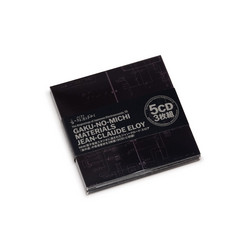Jean-Claude Eloy
Initially launched in 1993 and appearing at a slow pace over the last 30 or so years, the imprint Sound3 Co.’s incredible “The Beginning of Japanese Electroacoustic” series has taken great strides toward illuminating the incredible and groundbreaking contributions of Japanese composers like Hirosi Siotani, Yuuji Takahashi, Yoriaki Matsudaira, Toshiro Mayuzumi, Joji Yuasa, Keitaro Miho, Toshi Ichiyanagi, Akira Miyoshi, Minao Shibata, Akemichi Takeda, and numerous others to the to the field of experimental, electronic music. Fascinatingly, while rare, Sound3 Co. has maintained a striking openness to the series, allowing for the presence of non-Japanese artists who worked in Japan, best exemplified by Michael Ranta’s inclusion in the 4th instalment. Their latest, “Gaku-No-Michi Materials” - the 15th and by far most ambitious entry in the series - takes this one step further, delivering a radical new means through which to approach the French composer Jean-Claude Eloy’s legendary, monumental electroacoustic work. Composed between 1977 and 1978 at NHK Electronic Music Studio, with the final work clocking in at an astounding six hours, drawing upon field recordings made in various locations across Japan and numerous ideas and concepts - most notably Zen Buddhism - four and a half decades later it remains one of the great 20th Century gestures at the juncture of electronics and musique concrète. Sound3 Co.’s incredible new 5CD set edition, “Gaku-No-Michi Materials”, includes the individual tape reels composed by Eloy, to be presented autonomously or combined in an inventive number of variable in each real-time performance of the work, as free-standing tracks, allowing the listener to hear and enter the work in remarkable new ways. Extending across a truly engrossing five CDs, complete with an explanatory booklet that delves into the life and work of the composer, as well as the ideas and processes that delivered us “Gaku-No-Michi”, “Gaku-No-Michi Materials” is nothing short of revelatory and profound on both historical and creative terms, unveiling new dimensions of this towering work. More than three decades into its run, the “The Beginning of Japanese Electroacoustic” series delivers again with an absolutely essential and beautifully produced release that stands as their most ambitious and important to date.
Born in 1938, Jean-Claude Eloy belonged to the great second wave of French post-war experimental electroacoustic music who emerged during the 1960s and '70s, but has largely remained overlooked, compared to peers like Bernard Parmegiani, Jean Schwarz, Guy Reibel, and François Bayle, most likely due to his lack of association with Groupe de Recherches Musicales and the long (albeit justifiable) shadow it casts, and the fact that many of his most significant compositions were made while working outside of France. A student of Darius Milhaud at the Paris Conservatory, Eloy attended the legendary program in Darmstadt 1957, 1960, and 1961, studying with Henri Pousseur, Hermann Scherchen, Olivier Messiaen, Pierre Boulez, and Karlheinz Stockhausen, as well as continuing his studies with Boulez in Basel during that final year. Following two years at the end of the 1960s teaching at the University of California, Berkeley, at Stockhausen's invitation, he spent 1972–73 working at the legendary Studio for Electronic Music (WDR) in Cologne, where he produced the highly regarded work, “Shânti”, for electronic and concrète sounds; that would become his first recorded release to fully occupy an entirely electroacoustic realm.
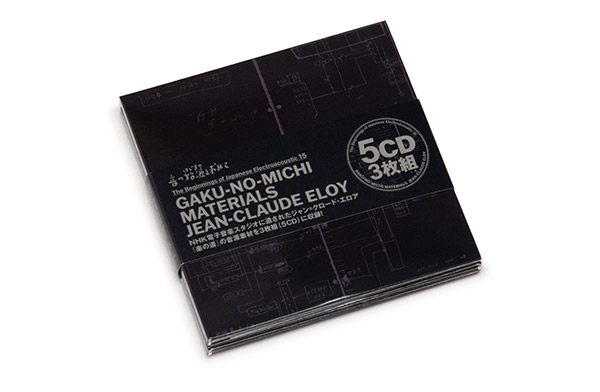
Between 1977 and 1978, Eloy spent a significant amount of time in Japan, working at the Electronic Music Studio of NHK in Tokyo. It was here that the composer created “Gaku-No-Michi”, what many regard as his most important work. Initially released in 1979 in a heavily truncated form as a double LP by Disques Adès - the same version that became a Creel Pone during the 2000s, bringing into wider consciousness - a more complete version was issued as a 4CD box set by Eloy’s own Hors Territoires imprint in 2010.
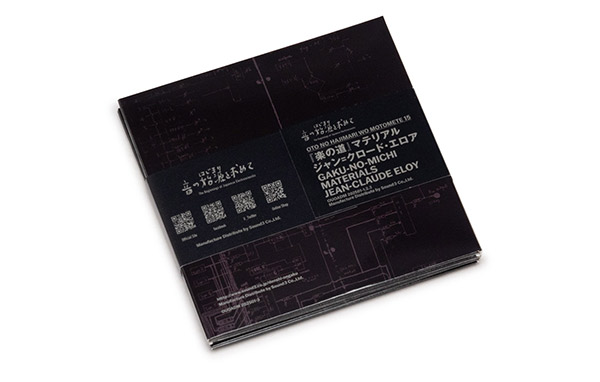
Unlike the majority of electronic and electroacoustic works of this period which, upon their completion, remain fixed in their character during performance and playback, “Gaku-No-Michi” is a work of potentially infinite variables. As the work’s chief engineer, Tsutomu Kojima, explains: “The music consists of three groups: A, B and C [tapes]. Of these, rolls A and C were fixed on two-track stereo tape. The B roll also consisted of a four-track tape (Quadraphony, Front L,R, Rear L,R)… with 14 rolls of 2-track tapes playing for a total of 3 hours, 9 minutes and 30 seconds, and 8 rolls of 4-tracks in the B group for a total of 2 hours, 55 minutes and 34 seconds, for a total of 6 hours, 5 minutes and 4 seconds. The performance of the work did not simply involve playing these tapes in sequence, but required the composer himself to be the performer and to manipulate them each time. The method was intended to allow various variations to be composed by freely changing the combination of the A and C rolls, timing the tape changes around the material on the four-track B roll.”
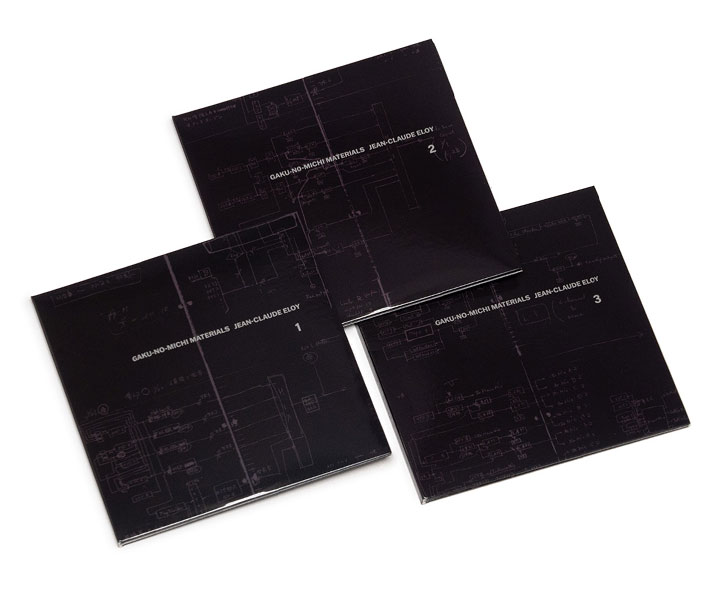
While the world has had access to one complete potential permutation, via the Hors Territoires box, for fifteen years, Sound3 Co.’s incredible 5CD set, “Gaku-No-Michi Materials” opens new realms of access to Eloy’s great opus in multidimensional ways, presenting each of the reels used by the composer to construct his real time versions of “Gaku-No-Michi” as individual, free-standing tracks. While it is important to recognize that Eloy sometimes presented these reels as movements of the piece themselves, without combining them with other material / reels, and as such a kind of stripped back access that he sometimes allowed for himself when encountering the work, by approaching his reels this way there is a great deal to be learned.
As it’s been encountered in both the 1979 and 2010 editions, “Gaku-No-Michi” is an electroacoustic work of extreme maximalism where the layering of sonorous densities - pulled from a vast range of sources - culminates as a fascinating form of minimalism. Across its sprawling duration, the complexity of detail, encountered within a single passage or moment, is often so vast in scale that the countless number of individual elements fuse into a single unified sense of perception.

What becomes particularly striking, when approaching the “materials” of “Gaku-No-Michi”, is the inversion of the above phenomena: a more minimal form becomes even more maximalist. Each reel of material - 22 in total across the 5CD collection - is heavily composed in its own right, rather than comprising a single sound-source, and feels like a completed work of rigorous electroacoustic experimentation, rather than an element of something larger. As such, we quickly encounter the reasoning for the assembly of such a release. Each of Eloy’s reels is marked by such a striking sense of artistry and depth that they are capable of being presented and experienced on their own, as much as in combination. Where one might naturally expect such an encounter to allow for a more nuanced understanding or the root elements that comprise the composition of each reel, listening to them on their own, independent of the larger work, allows for a surprisingly elevated experience of their complexity, as bristling layers of ambience, textures, and tones collide with fleeting images of the world in recorded form, having undergone varying levels of intervention and processing.
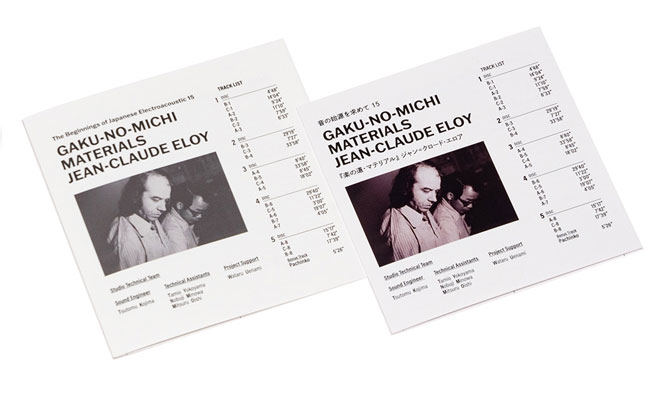
Unlocking new crucial dimensions of one of the great 20th Century gestures of experimental electronics, electroacoustic music, and musique concrète, Sound3 Co.’s incredible “Gaku-No-Michi Materials” casts the great French composer, Jean-Claude Eloy, into the center of our consciousness as one of the most important creative voices of our generation. Reframing and offering unprecedented access to, and experience of, this monumental work, this is easily one of the most ambitious and historically important releases we’ve encountered this year. Joining Sound3 Co.’s already revelatory “The Beginning of Japanese Electroacoustic” series, “Gaku-No-Michi Materials” is issued in a stunningly produced 5CD edition, complete with an explanatory booklet that delves into the life and work of the composer, as well as the ideas and processes that brought the work and its reels into being, this one is as essential as they come for any fan of Eloy, 20th Century electroacoustic practice, and experimental music at large.

